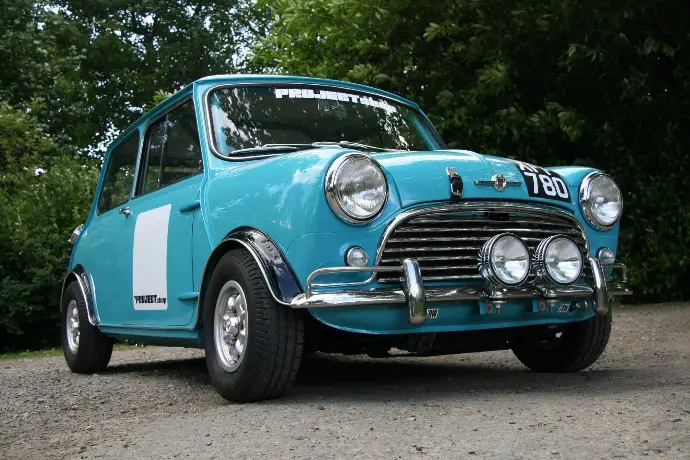Suspension
One word that covers a lot of ground! The questions you need to ask yourself, before you start are:
How good is it now, compared to when it was new?
What characteristics do I want to change to make it better for my style of driving?
How will the geometry change when I upgrade any components?
What Components Make up Suspension?
Broadly there are 3 separate types of component in every vehicle’s suspension. Firstly you have some kind of spring arrangement. These set the ride height of the car and to a certain extent how firm the ride is. The shorter or tighter wound the spring is the less deflection you will have and the lower the ride height. The second is the damper. These oil filled tubes ‘control’ the deflection. The more they are allowed to move the more compliant the ride, but the more body roll you will have. The third type of component are the rubber bushes that isolate these moving components from the chassis or body shell. They can have a huge effect on the car’s handling and comfort. Most classics have relatively compliant suspension, which means that you can really improve the road holding, body roll and feedback with some well chosen upgrades. However it is all too easy to ruin the ride quality and make the car bounce from one rut in the road to another.

Springs
There are three different types of spring that you will find on classic cars. A coiled spring, a leaf or ‘cart’ spring, and torsion bar. They need changing because like any spring they either lose their natural ability to ‘spring back into shape’ or they break in half! You will be amazed at the difference a new set can make to the drive of your car.
- Coiled springs are what most of us instantly think of. These coils of high tensile steel either wrap around the outside of your damper and are called coil overs, or they are found between the top and bottom suspension arms, effectively holding them apart.
- Leaf springs sit horizontally to the road and are attached to the axle. They are a little agricultural, but strong and simple. Despite being developed for the horse and cart, they are used on 50% of all classic cars and are still used on trucks today.
- Torsion bars are long cylinders of spring steel that twist as the suspension rises and falls. Once fitted, they are easily adjustable. By ‘doing them up’ they get firmer and the ride height drops. You find them in the front of Jaguar E-Types, all rear engined VW’s as well as many others.
The most common spring upgrade is a lowering spring. These are shorter and firmer than those that came on your car from the factory. However, you have to understand what lowering the ride height does to the rest of your suspension geometry. It can change the way your car steers and how quickly your tyres wear out. Generally they are best bought with a matched set of shock absorbers and always have a 4-wheel alignment after fitting them.
Shock Absorbers
Classics generally have two types of shock absorber. Lots of old British Cars such as MG’s and Bristol's have ‘lever arm’ shocks. Your choice here is really either to get them rebuilt, or to modify the car to allow for coil-overs. All other classics have a more conventional gas or oil filled cylinder mounted between the top of the wheel arch and the lower arm. Your cup overflows with options here. Koni, Bilstein, SPAX, GAZ amongst others are all great quality aftermarket options. Generally they have an adjustable range allowing you to firm/soften them up once they are fitted. Each manufacturer has different specialities, so it depends on your car and the characteristics you want to enhance as to what you choose. For example we would fit Koni’s to early 911’s, Bilsteins to 80’s BMW’s SPAX or GAZ shocks to a Lotus. If you are interested in changing or upgrading your suspension let’s start with a conversation and a cup of tea!
Bushes
When your car came out of the factory it had rubber bushes. Generally if you renew a classic with good quality OEM rubber bushes you will be delighted! It will get rid of the squeaks and clunks, you will get better feedback through the steering and the ride quality will be much improved.
Poly Bushes
What about something a bit firmer? Sold as a cure all product, you actually have to be very careful with poly bushes on a classic. Put simply they are often too hard. Body on frame classics, such as Triumph TR’s and Jaguar XK’s can be particularly affected because the shock is transmitted right through the chassis making it shudder over bumps. Unless you are racing, in which case comfort is well down the list of priorities, we would only ever use a heritage spec polybush on these cars, which is much softer. In a unibody classic such as a 911, MGB or an E-type you can get away with a mid (purple) spec bush, but only if you are looking for a fast road set up. Again there are a lot of aftermarket options, the best thing to do is speak to us so we can help you make the right choice.

Get Your Car Booked in Today
With a dedicated service team we can provide a rapid response for servicing and MOT’s. Call us or click the button below to contact us and we can have your classic collected and on the ramp in just 24 hours!
CALL – 01869 221 870